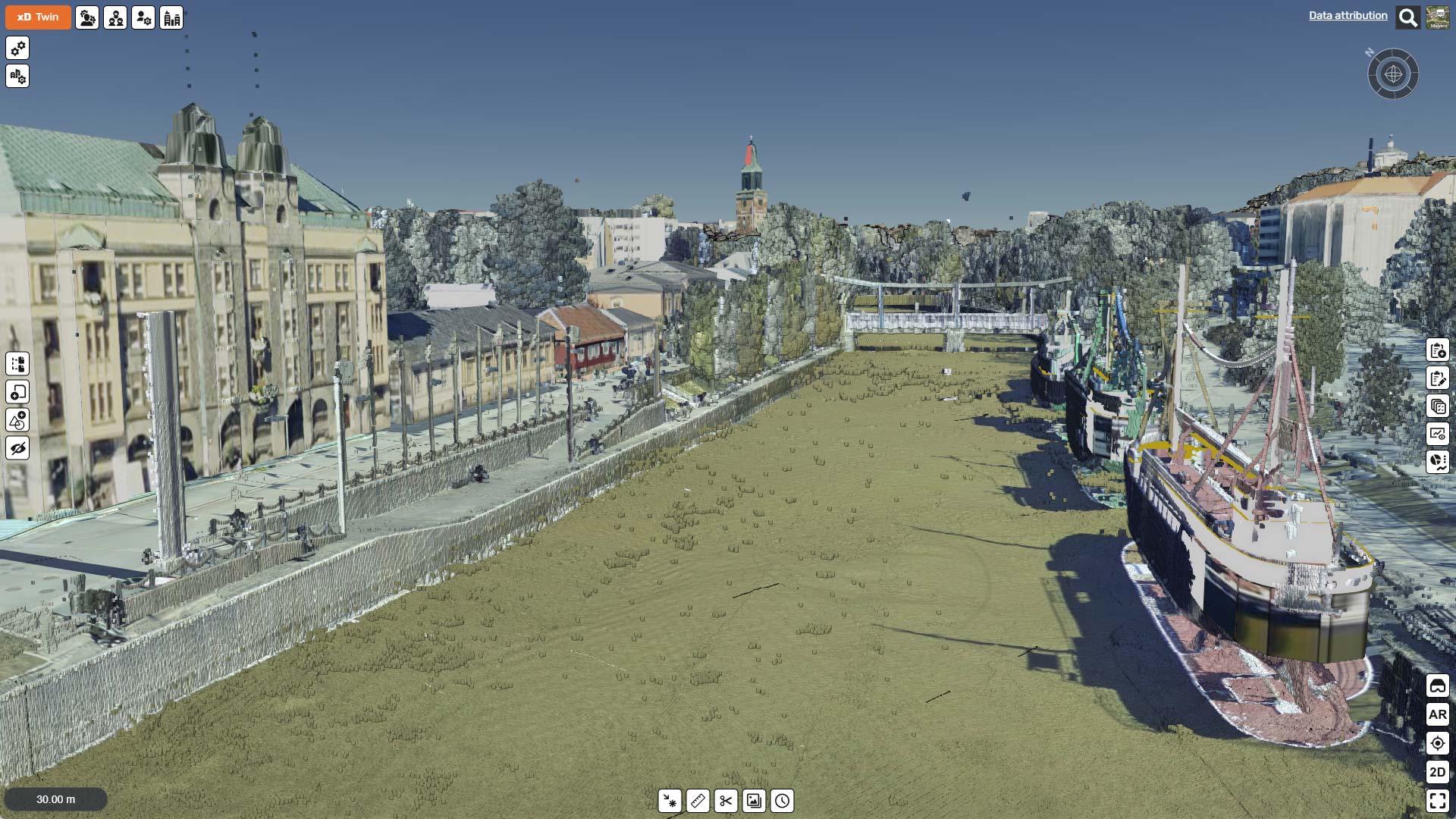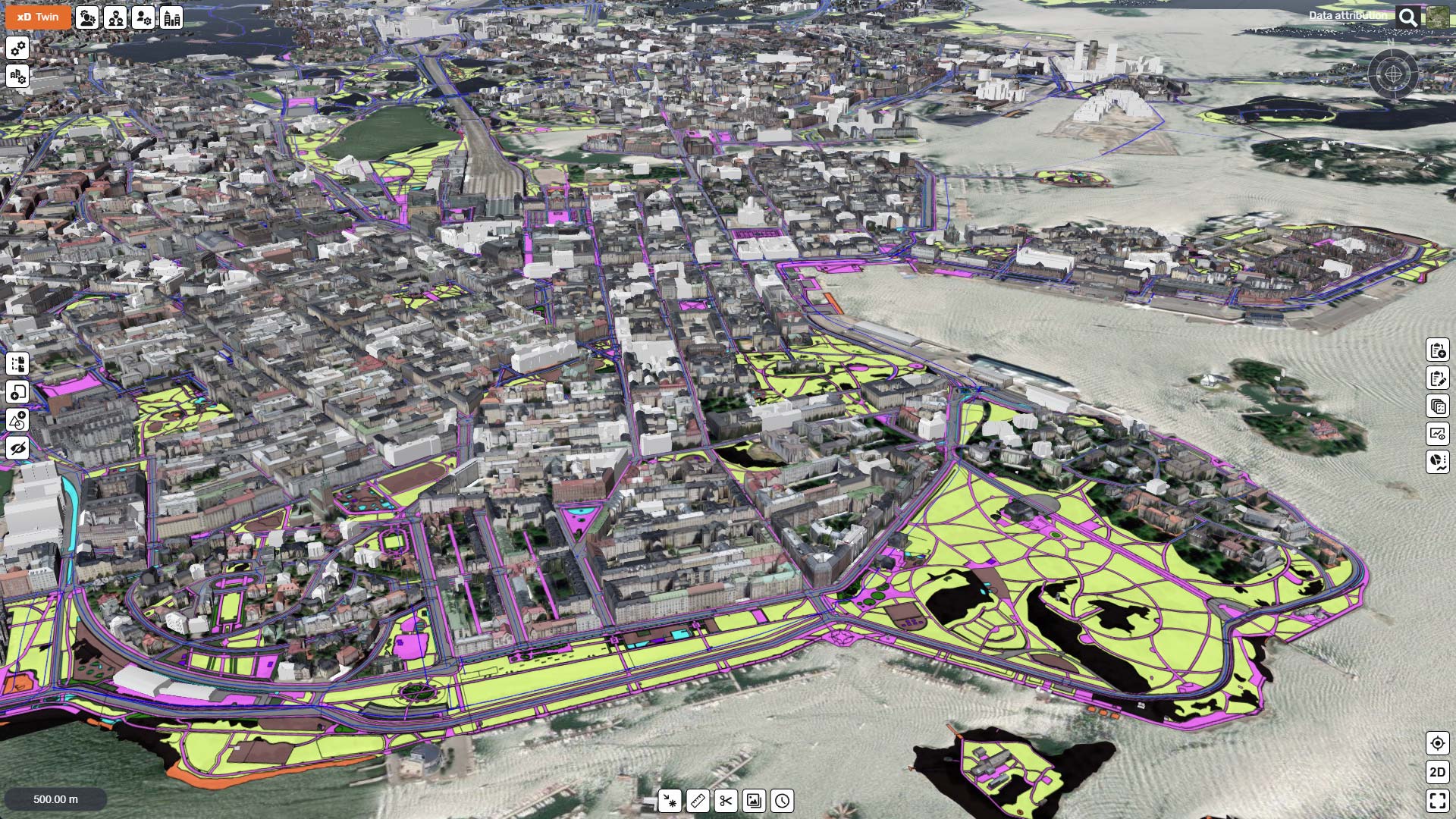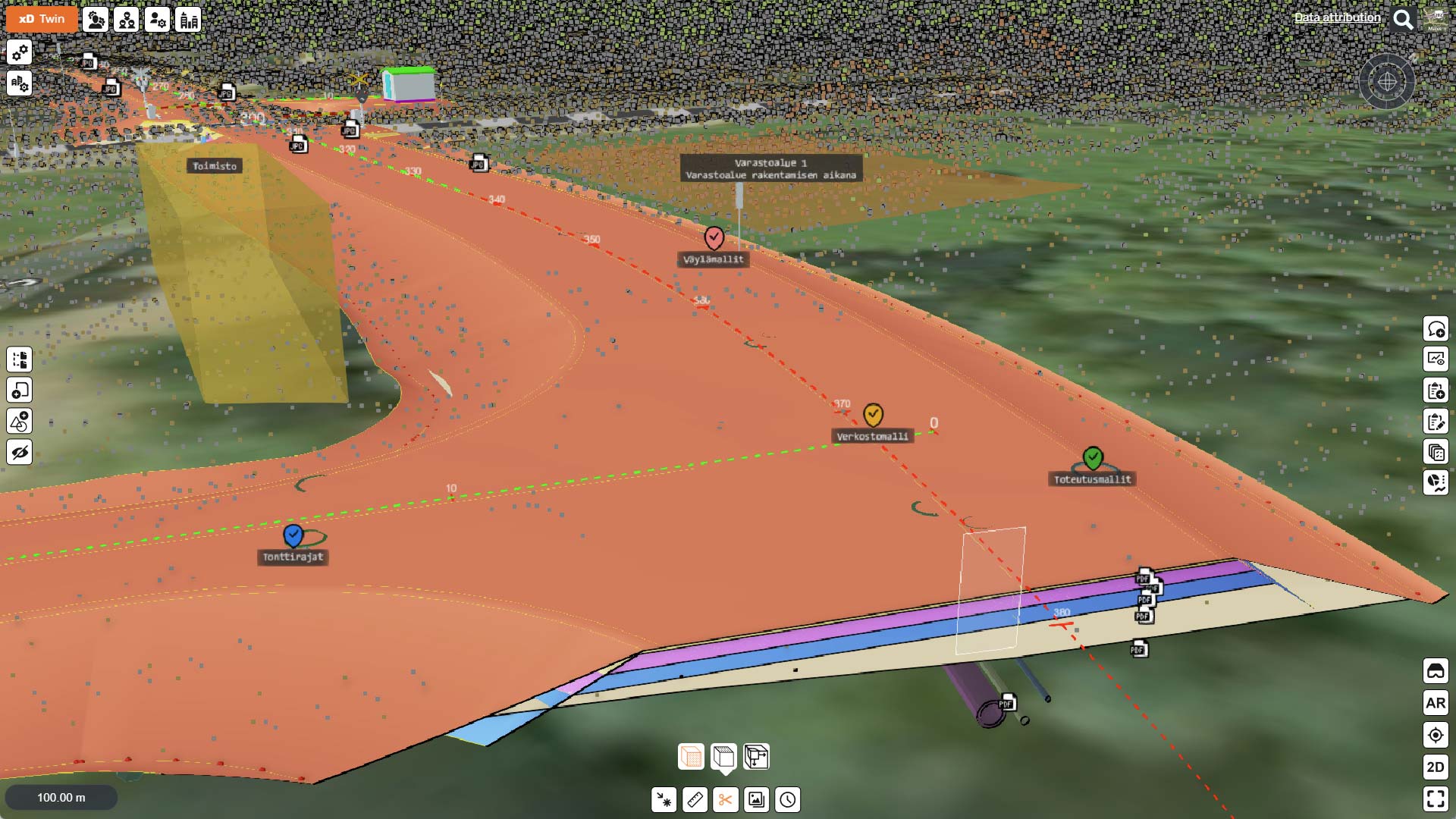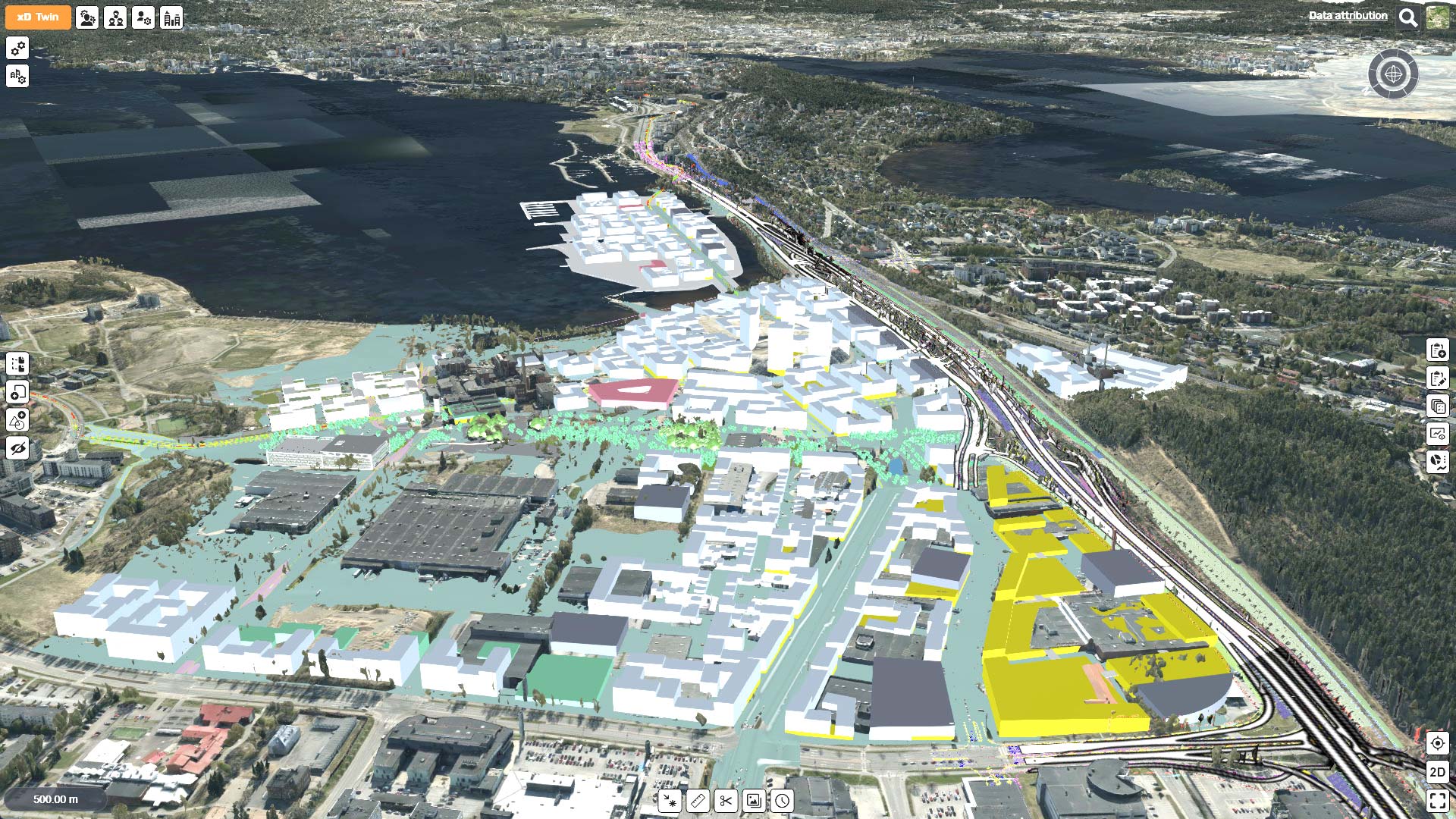I had a chat with Jarkko Sireeni, CEO and founder of xD Twin, a digital twin solution for urban development. The company won the 2022 WDBE (World of Digital Built Environment) award in the “Best Use of Open Standards “ category. We discussed how BIM data, GIS data, and other planning and construction information could be used in four-dimensional digital twins.
The Journey into digital twins

Jarkko has been working for over 30 years in civil engineering, infrastructure, and urban development. Initially, he did 3D modeling of infrastructure projects in the ‘90s. Interestingly, the same technology was also used in Hollywood movies. Later, he ventured into software engineering, making software solutions to manage digital transformation in 3D formats for the construction industry.
At the same time, Jarkko and his colleagues became interested in BIM usage in infrastructure and successfully developed one of the first BIM applications for the sector. They also became the pioneers of new construction technologies such as augmented reality, virtual reality, GIS, 4D and 5D simulations.
Then, a couple of years ago, Jarkko had a lightbulb moment. He had this idea of embracing a holistic approach to project information management. In other words, managing the whole built environment as one integrated information model. Also, he wanted to decentralize this perspective away from specific design disciplines.
In Jarkko’s words:
“The big problem is information management. Information in the built environment is dispersed in many data sources, formats and standards. Typically, when you start, for example, an infrastructure project, you have maybe 30 or 40 different data sources you need to combine, and you use much time to import and convert that data together.”


What Does xD Twin Do?
xD Twin is a cloud based integrated information management platform that handles any project scales, disciplines, and life cycle phases. The program supports all common open standards and formats while at the same time connecting information to project processes like communication, coordination, and collaboration.
To put it differently, you can control tasks, manage schedules and engage stakeholders all in one place, irrespective of the project type or discipline.


Why use open standards?
Jarkko is convinced that open standards are the way to go. As a future-proof solution, you’re guaranteed to use your data in the coming times. He emphasizes that a closed format poses a challenge because it’s difficult to access current project data in 10 or 20 years, such as for renovation purposes.
He further explains that open standards and interfaces make it possible to link to project information in real-time, eliminating the need to host the data yourself. Like in internet web pages, the information is automatically amended on the platform when the data is updated in the source.
Here is the type of open standards Jarkko uses:
“We combine all these open standards from different domains like from BIM, GIS, city models and site surveys. We support Open BIM standards like IFC from buildingSMART, LandXML standard for InfraBIM, city model and reality capture standards like CityGML and 3DTiles from OGC (Open Geographical Consortium). GIS information can be integrated using WMS and WFS standards so that information is read in real-time from different data sources like from the government, from the city, from the regional organizations, from your own servers.”
In short, xD Twin mainly stores project information while data about the existing built environment is sourced elsewhere, such as from GIS servers.


Solving the compatibility challenge
You’re probably wondering…what happens when the maps or GIS system uses a different coordinate system from BIM? Here’s how Jarkko solves the problem:
“All the information we bring into XD Twin is always in global coordinate systems. But then we also have local coordinates. We have all the commonly available local coordinate systems in the world in the system already. So, whether you are in Helsinki, Singapore, Amsterdam, or New York, you are using the city’s own coordinate system.”


Why use xD Twin?
First, Jarkko points out that you can combine all project disciplines together, be it buildings, road, rail, or pipe networks. Also, design teams can collaborate because they can see and match each other’s latest designs together. This reduces the potential for conflicts and makes optimizing solutions faster.
Second is communication. Jarkko gives an example of Europe, where it’s essential to present your design to citizens and take their feedback. With his platform, people can view the 3D models on their web browsers and give feedback. For example, City of Helsinki has successfully used this system to collect feedback about accessibility in the city by using digital twin of the city as feedback platform.
Third, integrated task and document management with the location. Jarkko pinpoints that you can also simulate project implementation and maintain an up-to-date site situation model with 4D scheduling. The result?
- Better understanding of project solutions
- Increased acceptance and trust by stakeholders and citizens.
- Faster access to information.
- Enhanced sustainability because aspects such as cost details and CO2 information are integrated into the model.
- Increased productivity and quality in projects


Dealing with competition
Jarkko doesn’t believe that large tech companies can have his business for breakfast. Here’s why:
“I used to work in a large, big technology company, so I know how they work. One thing is that young startup companies like my current company are very agile compared to large companies. So, what I do is that I listen to the customers, and I create tools for the customer needs and I can deliver that kind of tools much faster. This tool is quite much developed based on the customer needs. And the customers are very happy because we constantly develop at a very fast pace.”
Additionally, he believes that his company has the flexibility to use new technology because it’s still a startup. That he has no red tape to contend with like in large enterprises. Also, he isn’t focused on one discipline. Whether it’s city plans, tunnels, landscaping, or bridges, xD Twin manages all built environment fields together. Jarkko sees his solution as the “PowerPoint” for the built environment.


The plans for the future
xD Twin is currently based in Finland, but Jarkko has set his sights on the global market. He has already plans for Asia, Europe and USA as he seeks to grow his international customer base.
If you’d like to know more about xD Twin, visit xd-twin.io. Watch the AEC Business interview video with Jarkko.
Title image: Area development projects contain many disciplines which needs to be coordinated together in collaboration between architects, engineers, and other experts.
View the original article and our Inspiration here


Leave a Reply